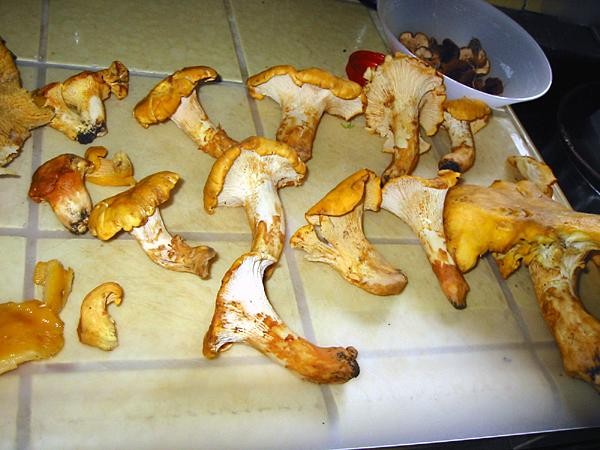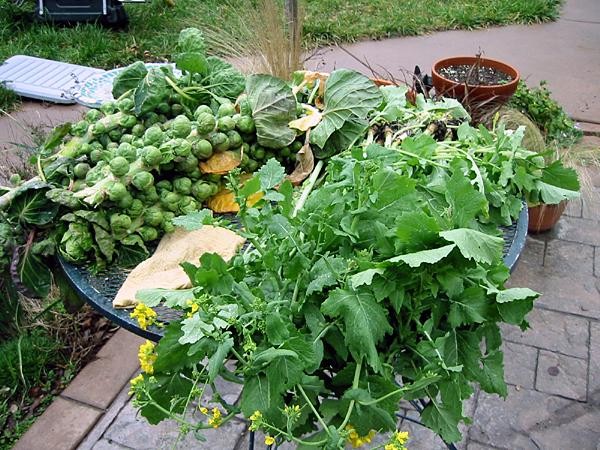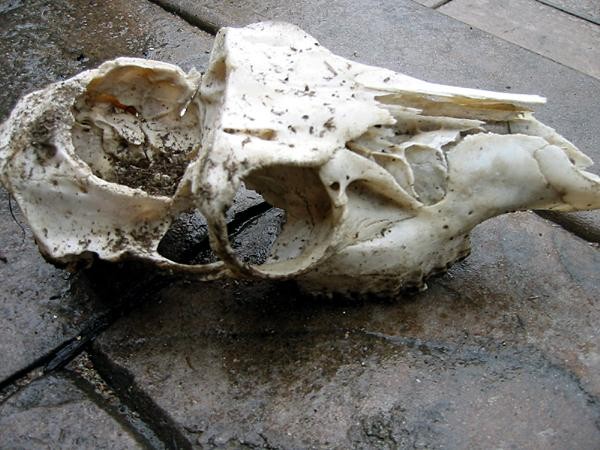Oh deer!
As you know, I like to find food. That makes it tough to travel sometimes, knowing what I am...






February 26, 2008
As you know, I like to find food. That makes it tough to travel sometimes, knowing what I am missing. Cleaned brussel sprouts are always OK, though not too tough to run down around here. It would be lots easier if it weren't for the fact that the farmers in the area have decided the big money is in providing the entire world with fresh strawberries. Every available acre is being converted, double rows lined with plastic, shot gun wielding guards on patrol, etc. It's good work I suppose, and good for the economy too, what with the thousands of semis involved, and, a little later in the supply chain, a slightly smaller number of jumbo jets, ready to fly off to wherever Whole Foods is with today's breakfast ingredients.
Farmers, bless their rustic souls, seem to be just as willing as the rest of us to hop on the bandwagon. It might work for some of them, too. Folks got very rich doing the same thing with lettuce a while back, though not many. Of course, they will achieve less than ideal results when there is too much of a good thing. Then it will be easier to get the brussel sprouts again. I am patient in these matters so I will wait. The sprouts are very good in a fresh pickle brine. See recipe below. The leaves are good braised too. We don't consider them food here but people in London pay dearly for them.
The wild greens are slightly wilder, and more fun to get. The greens in the shot that aren't brussel sprouts are wild mustard, a distant relative to all the happy cabbage family. The closest surviving relative you would find at your local grocery (but probably not at IGA) is called broccoli rabe or, if they are trying slightly harder with marketing, rapini. It's wonderful stuff, a bit bitter and tough, but very tasty. The Italians have a well developed taste for bitter food and a way to make it work. But then, they are Italians. It is growing everywhere here and all you have to do is go out and gather it by the armful.
But the most important source of free nourishment is the wild fungi. No better way to get in some trail time than a good mushroom hunt. How many kids (outside of France) go off to school after a breakfast of wild greens and an omelet topped with wild chanterelles?
In addition to the challenge, the freegan satisfactions and gastronomic delight, there is an economic incentive as well. These things cost as much as $50 a pound in the shops. I would never buy them for that, but it does make one feel good to know that the backpack stuffed with fungus is worth (quite) a few hundred dollars on the way back.
The chanterelles are going off here now, and the massive deluge we've had for the last week will ensure their continued existence, as well as a decent spring snow pack.
I have been on the road during the beginning of the season, and suffering from acute fungal deprivation. But, disciplined as I am, I coached my oldest daughter Megan on the fine art of finding them, so I could enjoy the season, if only vicariously. Some of her male friends are dabbling in wild foraging so she has that motivation as well. Imagine the props she gets when she leads them to a spot where they score 20 pounds of chanterelles on the first try.
On one of her early forays, she found a deer carcass. It was well on its way to returning to its chemical constituents, but the skull was in good shape and she brought it home. (I also have a very good collection of bones found in the wild - nature or nurture?)
Notice anything odd about it? Someone used a saw to take a wedge of the skull away, probably to retrieve the brain. So, after that lengthy preface, I have finally gotten to the punch line.
Why?
Do any of the hunters out there dabble in consuming the varietal cuts of a wild beast? Of the many options available in that regard, the brain would seem the least likely to go that way. http://whyfiles.org/156cwd_deer/
But if the brain was used in research it seems unlikely that the rest of the carcass would have been dumped in the park (Oh yeah, I forgot to mention that some of the best foraging is on public lands, which isn't exactly 100% legal. Let's be quiet about that, ok?) Maybe there is a new pagan cult out here with some odd rituals. It is Santa Cruz after all.
Any light to shed would be greatly appreciated?
KB
I like to reuse the brine for a few batches of vegetables. It seems to be good for at least a few months in the fridge. No promises on that, of course.
So the cycle goes like this. Make a batch, eat all of it, or most of it, blanch some more and stuff it in when it is still warm, to accelerate the pickling rate. You can start eating them the next day.
Get The Leadout Newsletter
The latest race content, interviews, features, reviews and expert buying guides, direct to your inbox!